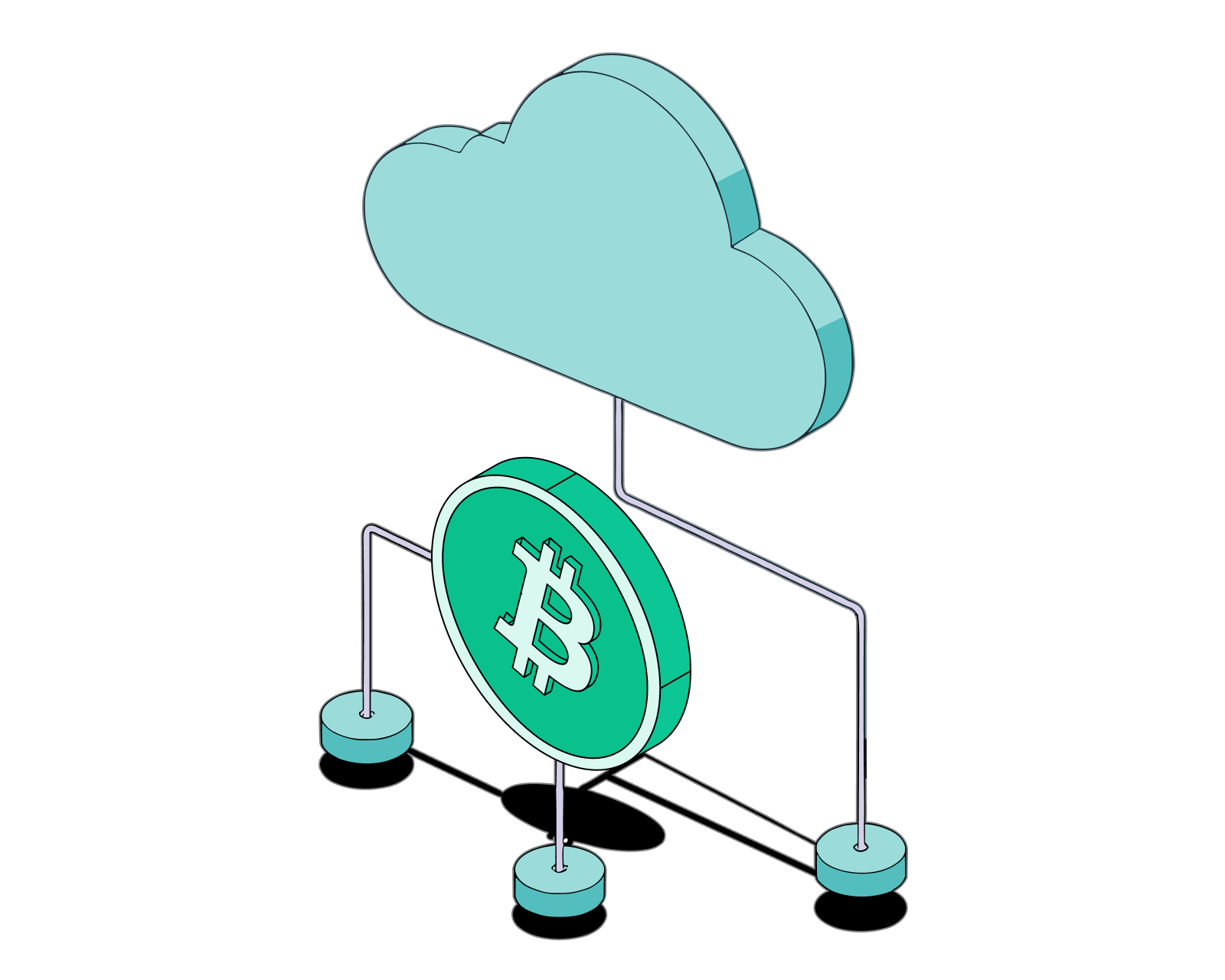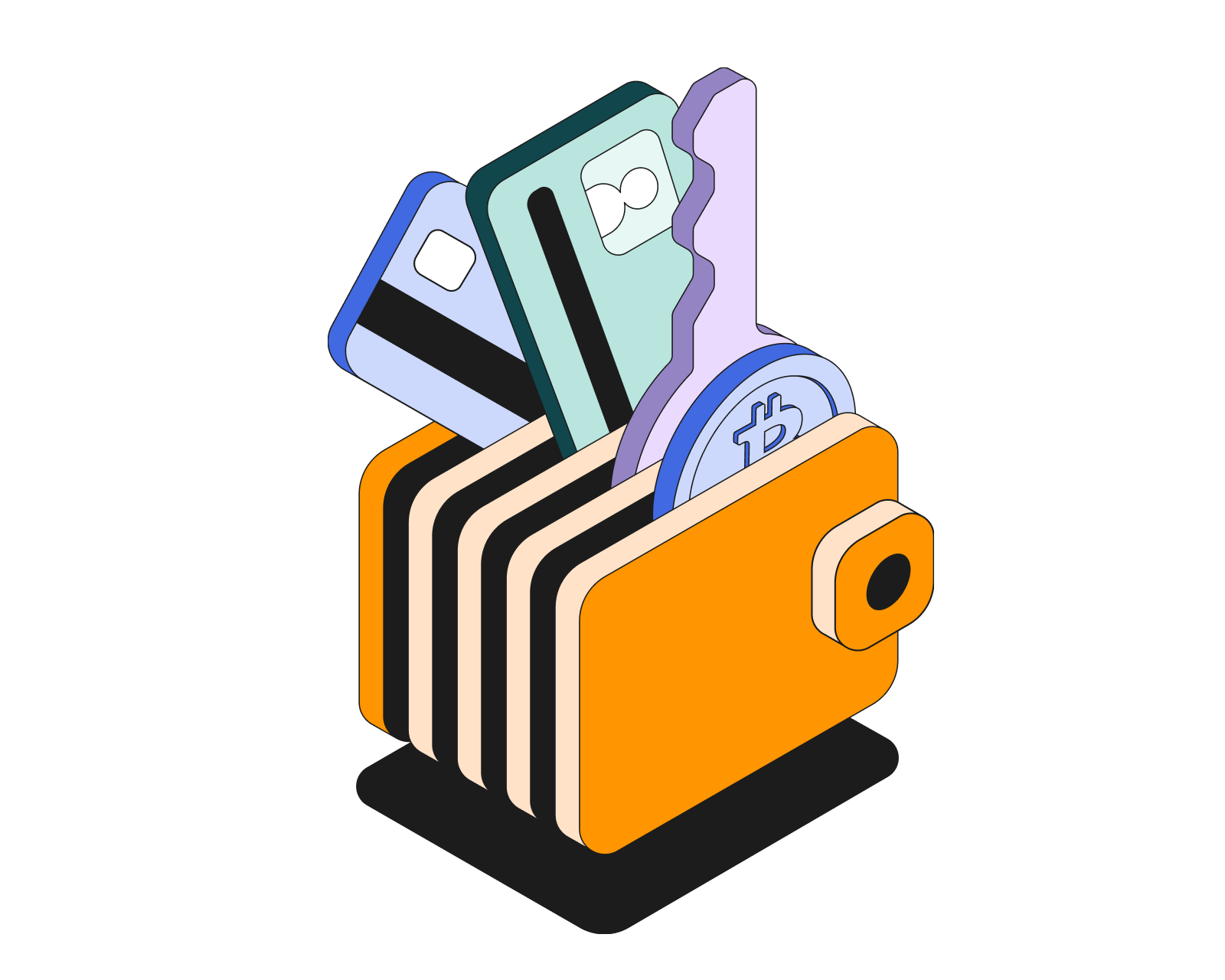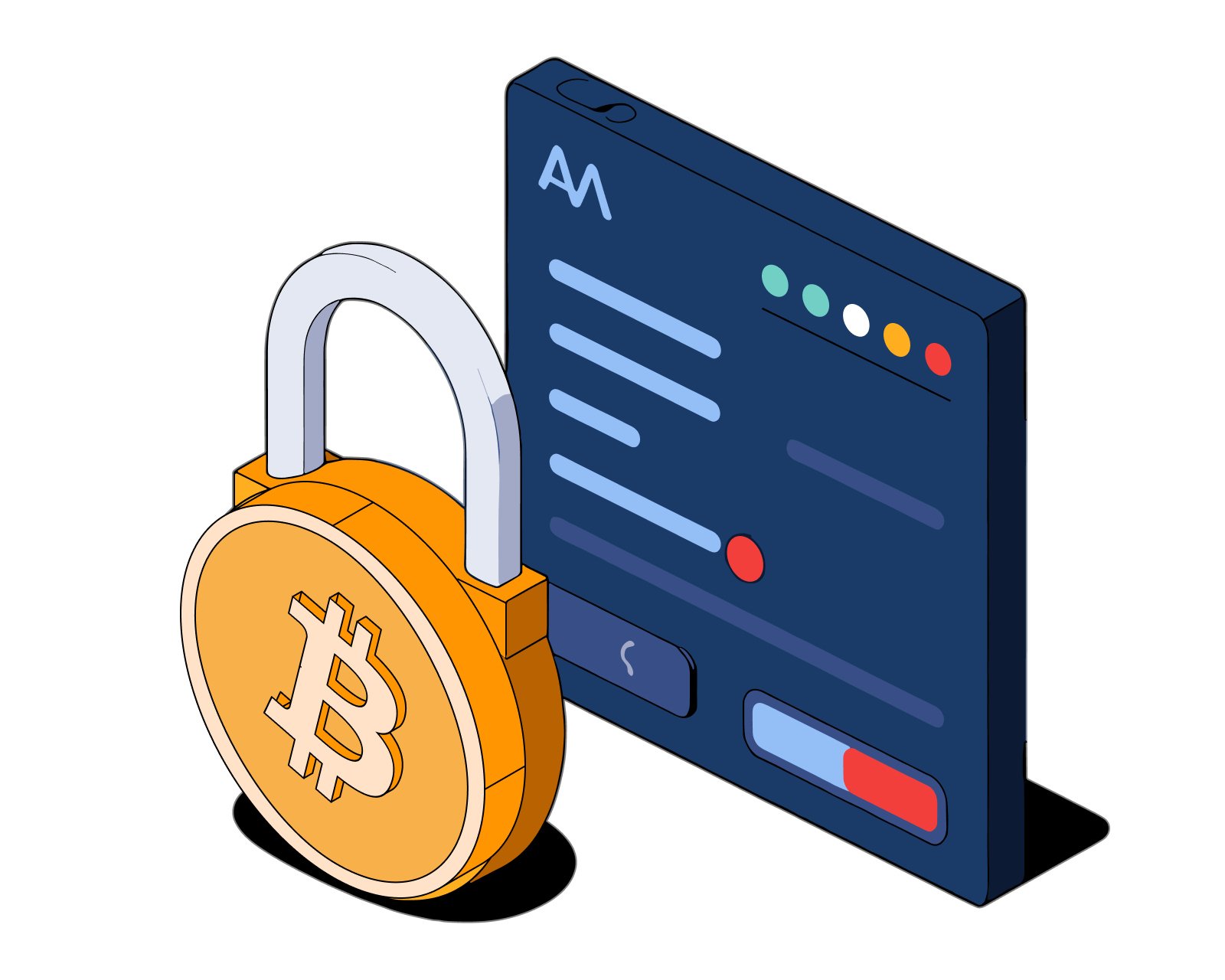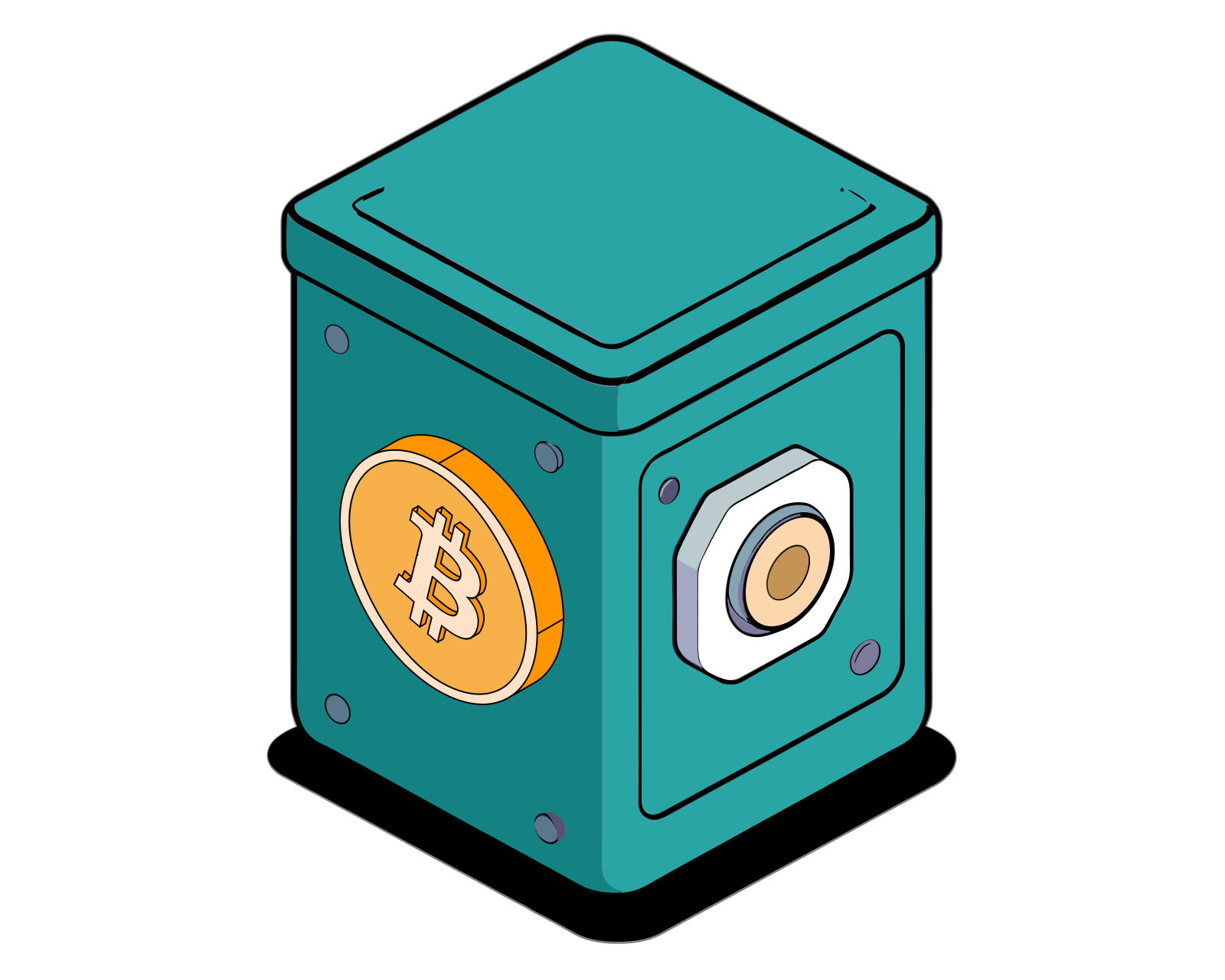Shared multisig Bitcoin wallets

Table of Contents
What is a shared Bitcoin wallet?
You might have come across the word “multi-signature" or “multisig" during your contact with Bitcoin. Multisig is a cryptographic technique used in what we call a shared wallet. Before we go any further, if you don’t already know what a Bitcoin wallet is, what a non-custodial wallet is, or how to create a wallet, stop right here and read those articles.
A fact that is often confused or overlooked is that in a Bitcoin wallet, your funds are not inside the wallet - just as your debit card doesn’t actually contain your cash. Like your debit card, you gain access to your funds through a kind of password (a very long, 78 digit password) called a private key. Private keys are held in your Bitcoin wallet, and without private keys, the associated Bitcoin cannot be used.
Basic Bitcoin wallets use one private key to access and send transactions while shared Bitcoin wallets require one or more private keys to access the funds connected with the wallet. Private keys in shared wallets are often given to different people, called participants. For example, if you have three private keys, you might keep one yourself and give the others to family members. Using a shared wallet with multiple participants might seem unnecessary, but there are many benefits.
Read more: Get a deeper understanding of private and public keys, and learn how Bitcoin transactions work.
Why should I use a shared wallet?
The first key reason to use a shared wallet is that it is a solution to the Bitcoin wallet problem of having a single point of failure, which can result in losing access to your crypto assets. For example, imagine there is a fire in the apartment building you live in. Your computer and the paper backup keys for your Bitcoin are destroyed. Without the keys, you have no way to access those assets. But if your wallet is shared with others (who don't live in your building!), you'll still have access to your funds.
The other key reason to use a shared wallet relates to the utility that comes with having multiple decision makers. For example, you can introduce savings for your child by providing her with some funds in a Bitcoin wallet. If it's a shared wallet, you'll have the chance to review any transactions initiated before approving or declining.
Read more: Here's a list of ways shared Bitcoin wallets can be used.
How does a shared Bitcoin wallet work?
Recall that Bitcoin wallets do not actually contain bitcoin. Wallets contain private keys that grant access to the bitcoin. In a basic wallet, there is only one private key connected to the wallet and that key is necessary to use the bitcoin. The private key is used as a mathematical signature to prove your ownership of the bitcoin.
In a shared wallet, multiple private keys are connected to the wallet. You will have to decide how many keys will be connected to the wallet, and how many keys will be needed to approve a transaction.
For example, if you decide to make a shared wallet with your mom and dad, there will be a total of three participants for the shared wallet. You decide that 2 of the 3 participants must sign a transaction for it to be approved (and thereby 'valid' to be broadcast to the blockchain). This shared wallet is called a “2-of-3 wallet." The shared wallet will have three private keys, but only two of the keys (in any combination) are required to approve transactions.
You can set the number of participants (up to 6) and number of approvals, such as, 1-of-2, 3-of-4, 6-of-6 etc...
How would this work in practice? Let’s look more closely at the above '2-of-3' example. We are going to talk below about setting up the shared wallet, so let’s assume you and your parents have successfully created the shared wallet.
Any private key holder can initiate a transaction through a transaction request. In this case, you, your mom, or your dad can request to move funds. As this is a 2-of-3 wallet, the transaction request will require just one approval from other participants, since the participant who made the transaction request (you) implicitly approves the transaction. If this was a 4-of-6 wallet, a transaction request would require 3 approvals.
Imagine you decide to buy a new car with some of the bitcoin from your shared wallet. You call your father on his day off, informing him of your plans and asking him to approve the forthcoming transaction request. Then, you submit the transaction request. Your father quickly approves the transaction, satisfying the conditions of the 2-of-3 shared wallet. The Bitcoin is transferred from the shared wallet to the car dealership.
What are the downsides of shared wallets?
There are a few potential downsides to using a shared wallet.
The first can easily be avoided by properly setting up the wallet. While it may seem that a 6-of-6 shared wallet is the most secure, this configuration in fact introduces an additional risk beyond a normal (single signature) wallet. Since a 6-of-6 shared wallet requires that all six participants approve any transactions, if even a single participant loses their private key, any funds in the wallet will be inaccessible. So, with a 6-of-6 wallet, you're effectively making the single-point-of-failure problem worse!
The other downsides of shared wallets relates to their ease of use and can be summarized as follows:
- A shared wallet requires making sure the other participants can perform the computer-related skills required.
- Once a shared wallet is set up it cannot be modified. Any modifications to a shared wallet, such as replacing a participant, requires setting up a brand new shared wallet from scratch.
- Transferring funds from a shared wallet will take more time than a basic wallet because, as described above, you have to wait for other participants to approve.
If you're looking to set up a shared Bitcoin wallet, you can do so in seconds using the Bitcoin.com Wallet. You can find more details on how shared wallets work and how to set them up in the Bitcoin.com Wallet here.
Related guides
Start from here →
How to set up and use a shared Bitcoin wallet
Learn about shared wallet "participants," "transaction requests," "approvals," and more.
Read this article →
How to set up and use a shared Bitcoin wallet
Learn about shared wallet "participants," "transaction requests," "approvals," and more.

What are the use cases for shared wallets?
Find out the many ways shared wallets can be used in the real world.
Read this article →
What are the use cases for shared wallets?
Find out the many ways shared wallets can be used in the real world.

What is a Bitcoin wallet?
Learn about this essential tool for sending, receiving, and storing your bitcoin; how it works, and how to use it safely.
Read this article →
What is a Bitcoin wallet?
Learn about this essential tool for sending, receiving, and storing your bitcoin; how it works, and how to use it safely.

What is Bitcoin?
Get a straightforward introduction to Bitcoin and why it matters.
Read this article →
What is Bitcoin?
Get a straightforward introduction to Bitcoin and why it matters.

How do I create a Bitcoin wallet?
Learn how to quickly and easily create a Bitcoin wallet. Understand the different wallet types and their respective pros & cons.
Read this article →
How do I create a Bitcoin wallet?
Learn how to quickly and easily create a Bitcoin wallet. Understand the different wallet types and their respective pros & cons.

How to choose the best Bitcoin wallet
From security to fee customization options, these are the key factors to consider when choosing a Bitcoin wallet.
Read this article →
How to choose the best Bitcoin wallet
From security to fee customization options, these are the key factors to consider when choosing a Bitcoin wallet.

How do I send bitcoin?
Sending bitcoin is as easy as choosing the amount to send and deciding where it goes. Read the article for more details.
Read this article →
How do I send bitcoin?
Sending bitcoin is as easy as choosing the amount to send and deciding where it goes. Read the article for more details.

How do I receive bitcoin?
To receive bitcoin, simply provide the sender with your Bitcoin address, which you can find in your Bitcoin wallet. Read this article for more details.
Read this article →
How do I receive bitcoin?
To receive bitcoin, simply provide the sender with your Bitcoin address, which you can find in your Bitcoin wallet. Read this article for more details.

What's a 'self-custodial' wallet?
Understand how the self-custodial model puts you in charge of your cryptoassets and protects you from third-party risk.
Read this article →
What's a 'self-custodial' wallet?
Understand how the self-custodial model puts you in charge of your cryptoassets and protects you from third-party risk.

How do bitcoin transactions work?
Understand how the Bitcoin public blockchain tracks ownership over time. Get clarity on key terms like public & private keys, transaction inputs & outputs, confirmation times, and more.
Read this article →
How do bitcoin transactions work?
Understand how the Bitcoin public blockchain tracks ownership over time. Get clarity on key terms like public & private keys, transaction inputs & outputs, confirmation times, and more.

How to set up a Bitcoin cold storage wallet
Learn what a Bitcoin cold storage wallet is, why it's important, and how to use one.
Read this article →
How to set up a Bitcoin cold storage wallet
Learn what a Bitcoin cold storage wallet is, why it's important, and how to use one.
STAY AHEAD IN CRYPTO
Stay ahead in crypto with our weekly newsletter delivering the insights that matter most
Weekly crypto news, curated for you
Actionable insights and educational tips
Updates on products fueling economic freedom
No spam. Unsubscribe anytime.



Start investing safely with the Bitcoin.com Wallet
Over wallets created so far
Everything you need to buy, sell, trade, and invest your Bitcoin and cryptocurrency securely

© 2026 Saint Bitts LLC Bitcoin.com. All rights reserved


